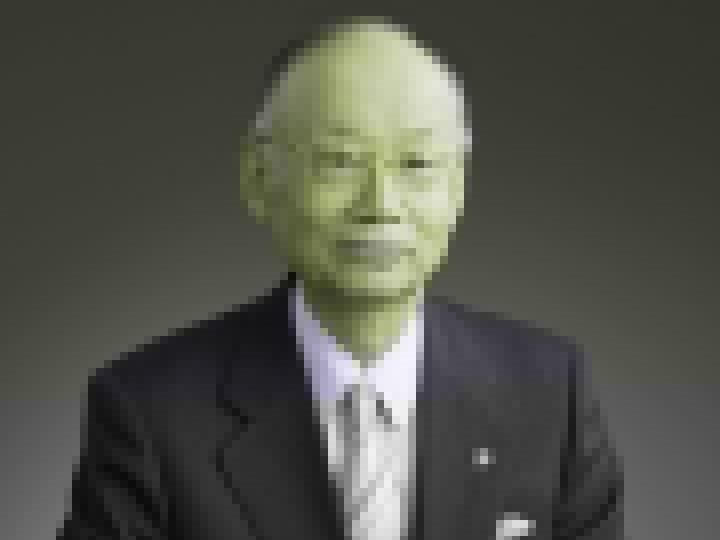Satoshi Ōmura

The work:
In 1973, the Kitasato Institute in Japan, led by Professor Satoshi Omura, formed a collaborative research partnership with Merck to discover new animal health products. Within this partnership, Professor Omura and his research team based at the Kitasato Institute in Tokyo isolated and screened microorganisms and sent the promising ones to the Merck laboratories in the United States. Of particular interest was a microorganism, Streptomyces avermitilis, isolated from soil near an oceanside golf course in Japan which had potent bioactivity. Researchers at Merck’s lab conducted further testing on the microorganism and then the compound responsible for the activity was named avermectin. Scientists at Merck refined avermectin under the name ivermectin, which was the safest and most potent derivative. Despite decades of searching around the world, the Japanese microorganism remains the only source of avermectin ever found.
The impact:
Ivermectin, commercialized in 1981 as a highly successful veterinary drug active against both internal and external parasites, was later found to be safe and effective for treating several human parasitic diseases such as Onchocerciasis (river blindness) and Lymphatic filariasis (elephantiasis). Merck joined forces with the World Health Organization (WHO), the Special Programme for Research and Training in Tropical Diseases (TDR) and the Onchocerciasis Control Programme in West Africa (OCP) to test the drug in humans. Ivermectin was registered for human use by French regulators in 1987. With the Kitasato Institute agreeing to forego royalties, Dr. Roy Vagelos, the then Chief Executive of Merck, announced that ivermectin would be provided free of charge for the treatment of river blindness for “as long as it is needed,” a pledge that is still being honoured. Utilizing a truly international partnership involving the public and private sectors, governments of disease-endemic countries and affected communities, mass drug administration commenced in 1988 and the donation has allowed the goal of eliminating both diseases to become achievable in the near future. Ivermectin has also become the drug of choice to treat strongyloidiasis, scabies and head lice and research is being conducted into its effectiveness against other neglected tropical diseases.
Bio
Prof. Satoshi Omura received an M.S. degree in 1963 from Tokyo University of Science, followed by a Ph.D. in Pharmaceutical Sciences in 1968 from the University of Tokyo, and another in Chemistry two years later from the Tokyo University of Science. His first position was as a Research Associate at University of Yamanashi (1963-1965). In 1965 he began his career-long association with the Kitasato Institute, initially as a researcher, over the years occupying various posts, culminating in his appointment in 1990 as President. He served as President Emeritus of The Kitasato Institute (2008-2012), and is currently a Distinguished Emeritus Professor and Special Coordinator of the Research Project for Drug Discovery from Natural Products in the Kitasato Institute for Life Sciences, Kitasato University. He was also appointed as inaugural Max Tishler Professor of Chemistry at Wesleyan University (USA) in 2005.
Commencing with his studies in Organic Chemistry at the Tokyo University of Science, from 1965 onwards he has performed comprehensive research on Bioorganic Chemistry, focusing on bioactive substances of microbial origin. He devised several innovative new methods for isolating and culturing microorganisms and established many original methods of screening for bioactive substances. As a result, he has discovered more than 470 novel bioactive compounds. Among them, the globally significant anthelmintic antibiotic avermectin and its derivatives, seen by many to rival penicillin in their impact on global health, were discovered through collaborative research with Merck Sharp & Dohme Research Laboratories (USA), his group eventually deciphering the entire genome of the producing organism, Streptomyces avermectinius.
Prof. Omura has been widely recognized in the natural-products chemistry field, as evidenced by his numerous awards and honors. Among these are the Hoechst-Roussel Award from American Society for Microbiology, Charles Thom Award (Society for Industrial Microbiology, USA), Robert Koch Gold Medal (Germany), Prince Mahidol Award (Thailand), Nakanishi Prize of Japan Chemical Society and the American Chemical Society, Ernest Gunther Award of the American Chemical Society, Hamao Umezawa Memorial Award of the International Society of Chemotherapy, Tetrahedron Prize for Creativity in Organic Chemistry, Arima Award of the International Union of Microbiology, and the Japan Academy Prize. He has been decorated with France’s L’Ordre National de la Legion d’Honneur Chevalier in 2007, and also has been designated by Japan in 2012 as a highly-prestigious Person of Cultural Merit.


